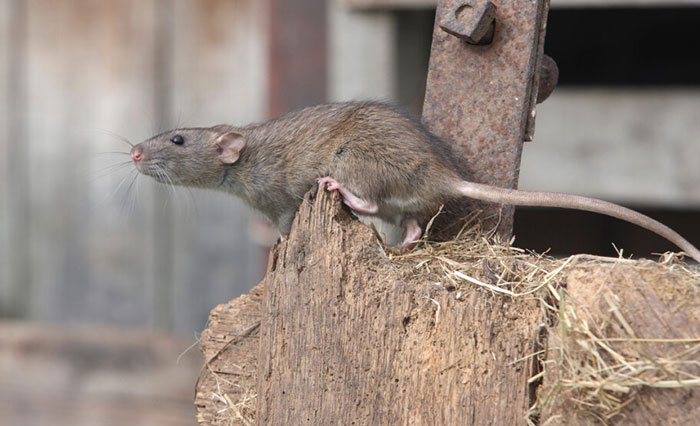How To Rodent Proof Your Home With These Three Simple Tips
Rodents can turn your home into a nightmare. They bring not only inconvenience but also potential health risks and property damage. The good news is that you can take proactive measures to rodent-proof your home.
Here are simple tips on how to rodent-proof your home: You must identify and seal any potential entry points. Maintain a clean environment by storing food in airtight containers and removing clutter. You can also use rodent-repellent methods like peppermint oil. Finally, ensure regular monitoring and maintenance, such as trap placement.
Continue reading this guide to learn 3 simple ways to prevent rodent infestation.
How To Rodent Proof Your Home?

Let’s break down the steps you need to take to rodent-proof your home effectively.
Identify and Seal Entry Points
The first step in your quest to rodent-proof your home is to identify and seal potential entry points. Rodents are notorious for their ability to squeeze through incredibly small openings. They can fit through as small as ¼” openings.
To effectively seal entry points, you must first know where these entry points exist. Here are some pointers:

Cracks and Gaps
Cracks and gaps in the exterior walls, foundation, and siding of your home can be primary access points for rodents.
- For small cracks and gaps, employ weatherproof caulk. Apply it evenly, ensuring complete coverage of the openings.
- For even better results, combine steel wool with caulk. Insert the steel wool into the gap, and then seal over it with caulk. This provides both a physical barrier (steel wool) and a weatherproof seal (caulk).
Larger gaps and holes may require expanding foam. It will expand to fill the space and harden, creating a sturdy barrier. You can also use concrete as it requires more space to be effective.
Doors and Windows
Doors and windows that don’t close securely, leaving even slight gaps, can become entry points for rodents. Pay attention to the area where the door or window meets the frame.
If gaps exist, replace or repair the weather stripping. Ensure it provides a snug seal when the door or window is closed. You can also use door strips.
Vents and Chimneys
Vents, chimneys, and attic openings are often overlooked but can serve as pathways for rodents to enter your home. To seal them, install wire mesh or screens. Ensure they are firmly fastened to prevent rodents from dislodging them.
Garage and Basement
Fit door sweeps to the bottom of garage doors. This prevents rodents from squeezing through gaps at ground level. Examine basement windows and doors for gaps. Seal any openings with weatherproof caulk or foam
Maintain a Clean Environment
A tidy and clutter-free home is less appealing to rodents, as it reduces their potential hiding spots and access to food sources. Here’s how to maintain an environment that discourages rodent activity:

Proper Food Storage
Buy airtight containers for storing dry goods such as cereals, grains, and pasta. These containers effectively protect food from rodents and other pests. Also, ensure your trash cans have tight-fitting lids.
Declutter Your Living Space
Organize your storage areas, such as basements and attics, by using shelves and containers to keep items off the floor. This minimizes potential hiding spots for rodents. Also, discard items you no longer need or use.
Regular Cleaning
- Sweep and Mop: Sweep and mop floors regularly to remove food particles and crumbs that might attract rodents.
- Vacuum: Use a vacuum cleaner with a hose attachment to clean nooks and crannies, as well as areas under furniture and appliances.
- Wash Dishes Promptly: Avoid leaving dirty dishes in the sink overnight. Rodents are attracted to food residue on dishes.
- Dispose of Trash Properly: Empty your trash cans regularly and use plastic liners to prevent food odors from lingering.
- Yard Maintenance
- Trim Vegetation: Keep bushes, trees, and shrubs trimmed away from your home. Overhanging branches can serve as bridges for rodents to access your house.
- Remove Debris: Clear your yard of debris, such as fallen leaves and woodpiles. These can provide hiding spots and nesting materials for rodents.
- Secure Outdoor Food Sources: If you have bird feeders, ensure they are positioned away from your home and clean up spilled birdseed regularly. Additionally, store pet food indoors or in secure containers.
Use Rodent Repellent Methods
- Ultrasonic Repellents: These emit high-frequency sounds that are unpleasant for rodents but inaudible to humans. Place them strategically in areas where rodents are likely to enter.
- Natural Repellents: Some natural substances like eucalyptus oil, peppermint oil, mothballs, or vinegar can deter rodents. Soak cotton balls in these substances and place them near entry points.
- Electronic Traps: Consider using electronic traps that quickly and humanely dispatch rodents. They are more efficient and less messy than traditional traps.

Regular Monitoring and Maintenance
Rodent-proofing your home is not a one-time task but an ongoing process. Even after implementing initial measures, it’s essential to continue monitoring and maintaining your defenses. Here’s what you should do:
- Renew Sealants: Over time, weather-proofing materials can deteriorate due to weather conditions. Reapply caulk or foam to any gaps or cracks as needed to ensure that your home remains impenetrable to rodents.
- Update Repellents: If you’re using repellents, be proactive in refreshing them regularly to maintain their effectiveness. Replace or recharge ultrasonic devices as recommended by the manufacturer.
Here is a video explaining more on how to rodent-proof your home.
FAQs
Let us address common queries that you might have when it comes to dealing with rodents.
Q1. What if I already have a rodent problem?
If you’re already dealing with a rodent infestation, don’t panic. There are steps you can take to address the issue:
- Determine how the rodents are entering your home.
- Select the appropriate type of traps, such as snap traps or live traps, depending on the size and type of rodents. Place them strategically near known entry points and areas with signs of activity.
- If the infestation is severe or persistent, it’s wise to consult a pest control expert. They can assess the situation, develop a tailored plan, and use safe and effective methods to eradicate the rodents.
- Once the rodents are removed, thoroughly seal all entry points to prevent future infestations.
Q2: What dangers do rodents cause to my health?
Rodents can transmit diseases to humans through their droppings, urine, and saliva. Common diseases include Hantavirus, leptospirosis, and salmonellosis.
Q3. How do I know if I have a rodent problem?
These may include droppings, gnaw marks on food packaging or wires, unusual pet behavior, and rustling sounds in walls or ceilings. If you spot any signs, take immediate action.
Conclusion
Rodent-proofing your home is an important step in maintaining a clean, healthy, and comfortable living environment. By carefully following the steps outlined in this guide, you will be well-equipped to take preventative measures against rodent infestations.
Remember that prevention is the key to success, but if you already have a rodent problem, use traps to catch the rodents. Then, make sure your home is rodent-proof to prevent additional rodents from entering.
There are viable options. With these tips and a little perseverance, you can have a rodent-free home for years to come.




